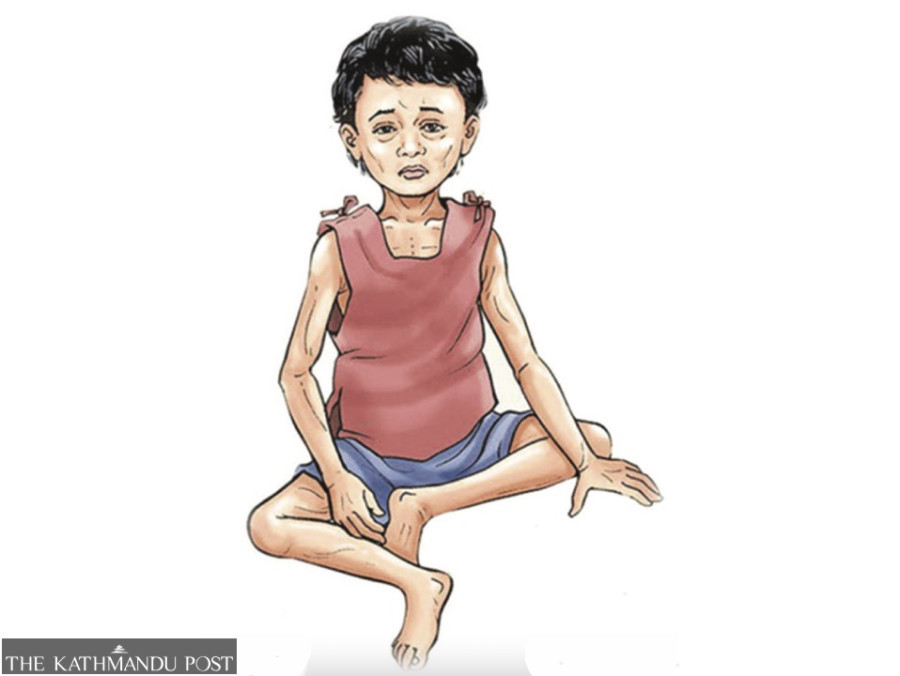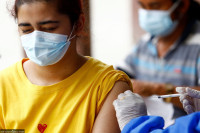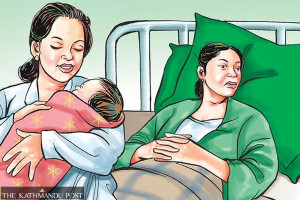Health
Nutrition rehab expansion stalled. Children suffer
Experts warn reluctance to invest in nutrition programmes could jeopardise Nepal’s health gains and SDG targets.
Post Report
Nepal’s plan to expand nutrition rehabilitation centres at hospitals has been on hold for four years, as budget shortfalls stall services vital for saving severely malnourished children.
The Ministry of Health and Population had planned to gradually expand 10-bed nutrition rehabilitation centres in hospitals with 50 beds every year. However, no new nutrition rehabilitation centre has been established since 2021, and officials blame lack of funds for halting the expansion of these crucial facilities.
“Every year, thousands of children from across the country suffer from severely acute malnutrition, who need hospitalisation and treatment under the close monitoring of health workers at nutrition rehabilitation homes,” said Lila Bikram Thapa, chief of Nutrition Section at the Family Welfare Division under the Department of Health Services. “We have not been able to expand such homes for the past four years due to a budget crunch.”
Health experts warn that the delay in expanding nutrition centres, combined with cuts to other nutrition services, threaten Nepal's gains in child health and could derail its commitment to meet global nutrition targets.
Malnutrition is considered a silent health crisis in Nepal. The country has made significant progress in reducing stunting among children under five. Stunting decreased from 57 percent in 2001 to 25 percent in 2022, according to the Nepal Demographic and Health Survey-2022.
Wasting, a debilitating disease that causes muscle and fat tissues to waste away, among children under five, decreased from 11 percent in 2001 to eight percent in 2022.
Wasting or low weight for one’s height in children, if not treated properly and on time, is associated with a higher mortality risk, according to the World Health Organisation.
Likewise, the report shows that 19 percent of children under five years of age were found to be underweight, which was 48.3 percent in 2001.
Experts say malnutrition affects children’s mental growth, too, which in turn undermines the country’s economic health. It weakens intellectual capacity, limits productivity in adulthood, and increases vulnerability to certain diseases.
It is estimated that over 15,000 children under five years of age suffer from severely acute malnutrition every year. The Health Ministry’s report of fiscal year 2080-81 shows that of 3,922,571 children screened 0.2 percent, which is 7,845 suffer from severely acute malnutrition, while 1.82 percent children or 71,390 others were found suffering from moderately acute malnutrition.
Experts say that if moderately acute malnourished children are not treated immediately, they will suffer from severe acute malnutrition.
The report shows that Madhesh, Lumbini, Karnali and Koshi Provinces have higher severely acute malnutrition rates than the national average.
Officials say that along with the planned expansion of nutrition rehab centers, the budget cut has also hampered the planned expansion of Outpatient Therapeutic Care (OTC) centres in all health posts throughout the country.
Of over 3,800 health posts operating throughout the country, only around 1,000 have been providing OTC services that involve management of non-complicated cases of severe acute malnutrition in outpatient care using ready-to-use therapeutic foods.
Likewise, the distribution of fortified flour to pregnant women and young children in Karnali Province has been halted since the last fiscal year due to a budget crunch.
Nutrition experts warn that the government's apathy towards the nutrition programme could cost the country its chance of meeting the SDG nutrition target.
SDGs, a follow-up on the Millennium Development Goals (MDGs), aim to end poverty and hunger and all forms of inequality in the world by 2030, and Nepal has committed to meeting the goals.
“It is impossible to achieve the SDG target by slashing the nutrition budget,” said Dr Atul Upadhyay, a nutritionist. “Showing apathy towards thousands of malnourished children not only affects the health of the affected children but also affects the overall development of the country.”
Nepal needs to reduce stunting to 15 percent from the existing 32 percent by 2030 in order to meet SDGs targets, wasting to 4 percent from the current eight percent, underweight to 10 percent from the existing 19, and anaemia to 10 percent from over 43 percent at present.




 7.12°C Kathmandu
7.12°C Kathmandu













